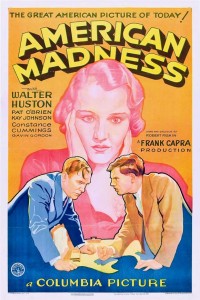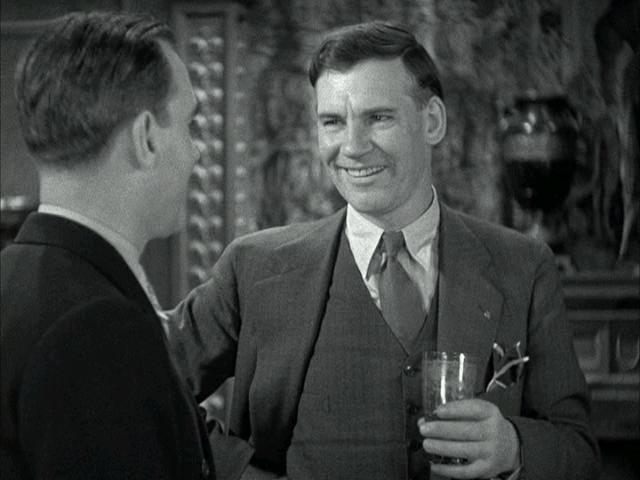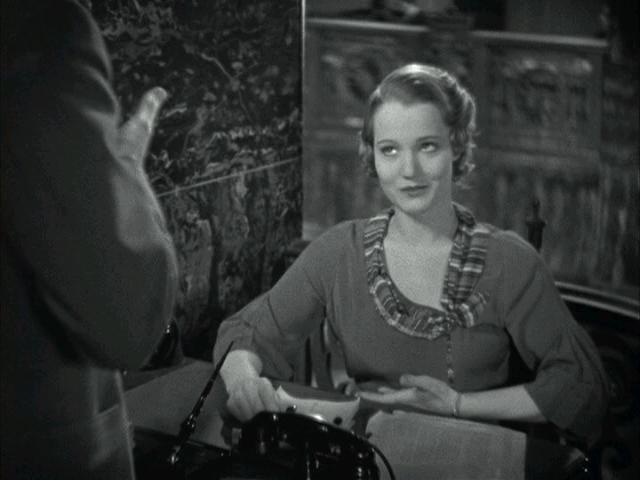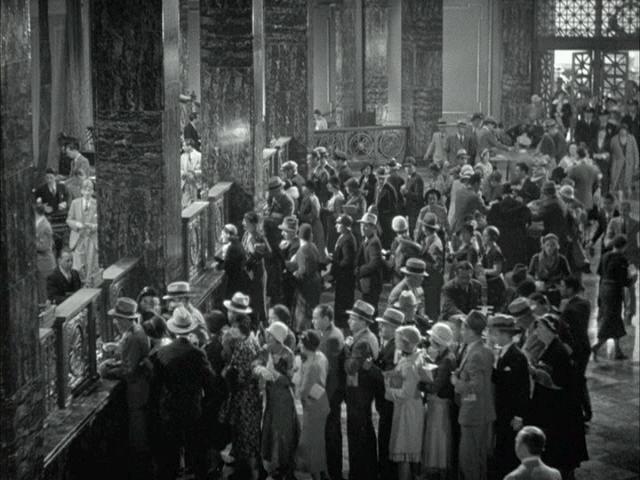|

Synopsis:
Warm-hearted banker Thomas Dickson (Walter Huston) is pressured by his Board of Directors to stop giving loans so freely, but he refuses on principle. When one of his debt-ridden employees (Gavin Gordon) facilitates a heist led by a group of gangsters, however, panicked depositors mob the bank to cash their savings, and Dickson must find a way to save his bank before it’s too late.
|
|
Genres, Themes, Actors, and Directors:
- Depression Era
- Do-Gooders
- Frank Capra Films
- Heists
- Naive Public
- Pat O’Brien Films
- Walter Huston Films
Review:
It’s easy to see shades of Capra’s later films in this fable-like story about a magnanimous banker (wonderfully played by Huston) who refuses to let anything stand in the way of his devotion to “the people”; indeed, fans of It’s a Wonderful Life (1946) will immediately recognize the familiar plot device of panicked townspeople descending upon a bank and demanding their money back. These crowd scenes are handled impressively, as are the more quiet moments between Huston and his wife (Kay Johnson); less enjoyable, however, is the script’s heavy handed morality, which insults our intelligence. Fortunately, the film is redeemed by excellent performances from nearly all the actors (Gordon is an exception), stunning art deco set designs inside the bank, and a fascinating look at Depression-era mentality about money.
Note:Although it comes across as a naively optimistic alternative to traditional banking methods, Huston’s philosophy about loans actually makes some sense, and can be seen in Bangladesh’s famous microcredit program run by Grameen Bank.
Redeeming Qualities and Moments:
- Walter Huston as the people-trusting banker

- Kay Johnson as Huston’s frustrated wife

- Pat O’Brien as Huston’s loyal right-hand-man

- Constance Cummings as O’Brien’s fiancee

- Gorgeous art deco set designs

- Effective use of rapid-fire editing, fast-paced action, and overlapping dialogue

Must See?
Yes. As the first film to demonstrate Capra’s unique style and thematic interests, most film fanatics will want to see this movie at least once. Peary lists it in the back of his book as a Personal Recommendation.
Categories
Links:
|







One thought on “American Madness (1932)”
A must – but not particularly for the same reasons as in the assessment.
For me, the film is most noteworthy for Walter Huston (giving yet another is-the-guy-ever-bad? performance) and Pat O’Brien, usu. a dependable actor who here is rather good as one of Huston’s trusted employees – and the one most loyal. (At times, almost heartbreakingly so.)
Though I like the film overall – mostly for its storyline – it seems to bog down a bit in places. (Not a good trait in a 75 min. film.) Some of the dialogue seems trite (i.e., a number of things Kay Johnson has to say); some of the humor is forced (the endless, godawful “You could have knocked me over with a pin.” bit); word around town of the bank closing goes on too long; and it may have been more effective if we actually heard very little of what the irate bank customers had to say while they stormed the bank tellers.
That said, it’s true that the design work is also effective, as are the action sequences (which are evocatively lit as well).
I’m willing to try to pull for any Capra movie that does not lean toward the sappy side – and he made a few too many of those. This one is more or less sap-free.
But a year later (1933), Capra made what I think is my favorite of all of his films: the rather un-Capra-like ‘The Bitter Tea of General Yen’.